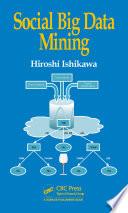Concepts, Algorithms, and Applications
A Fruitful Field for Researching Data Mining Methodology and for Solving Real-Life Problems Contrast Data Mining: Concepts, Algorithms, and Applications collects recent results from this specialized area of data mining that have previously been scattered in the literature, making them more accessible to researchers and developers in data mining and other fields. The book not only presents concepts and techniques for contrast data mining, but also explores the use of contrast mining to solve challenging problems in various scientific, medical, and business domains. Learn from Real Case Studies of Contrast Mining Applications In this volume, researchers from around the world specializing in architecture engineering, bioinformatics, computer science, medicine, and systems engineering focus on the mining and use of contrast patterns. They demonstrate many useful and powerful capabilities of a variety of contrast mining techniques and algorithms, including tree-based structures, zero-suppressed binary decision diagrams, data cube representations, and clustering algorithms. They also examine how contrast mining is used in leukemia characterization, discriminative gene transfer and microarray analysis, computational toxicology, spatial and image data classification, voting analysis, heart disease prediction, crime analysis, understanding customer behavior, genetic algorithms, and network security.
Contrast data mining is an important and focused subarea of data mining. Its aim
is to find interesting contrast patterns that describe significant differences
between datasets satisfying various contrasting conditions. The contrasting
conditions ...










